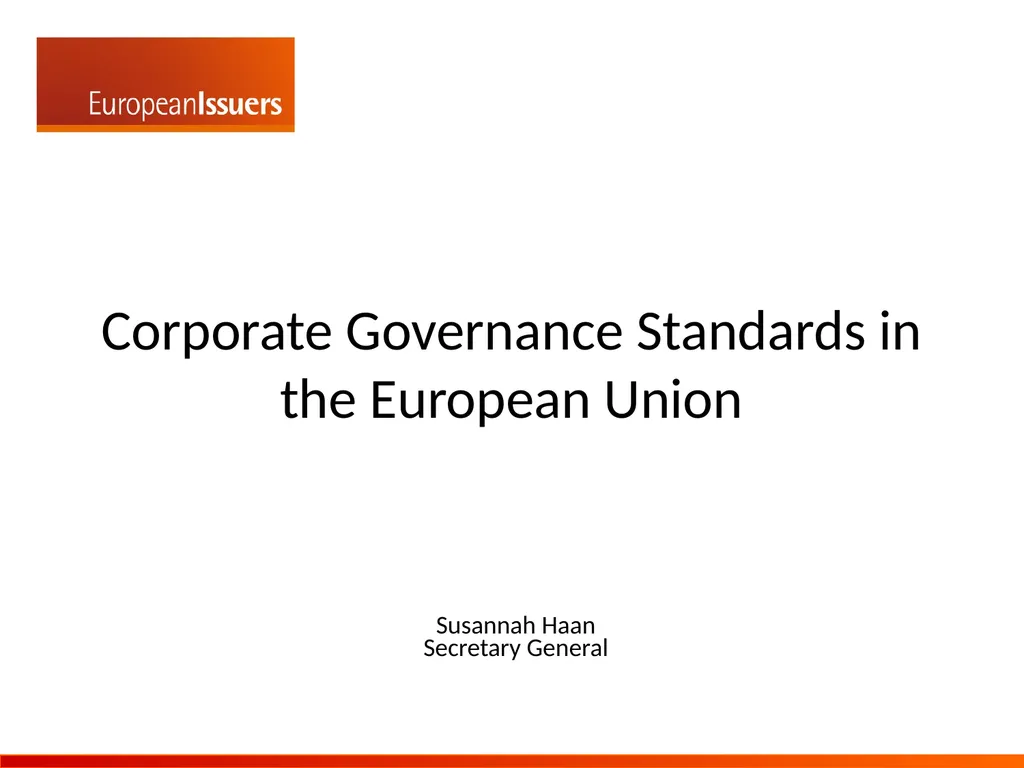
Corporate Governance Standards in the European
Author: celsa-spraggs | Published: 2025-05-28
Description: Corporate Governance Standards in the European Union About EuropeanIssuers EU trade association - we aim: To represent to EU policymakers the common interests of EU quoted companies as users of financial markets To ensure that the EU
Download Presentation
Download the PPT/PDF: Download
Transcript:
Loading transcript…